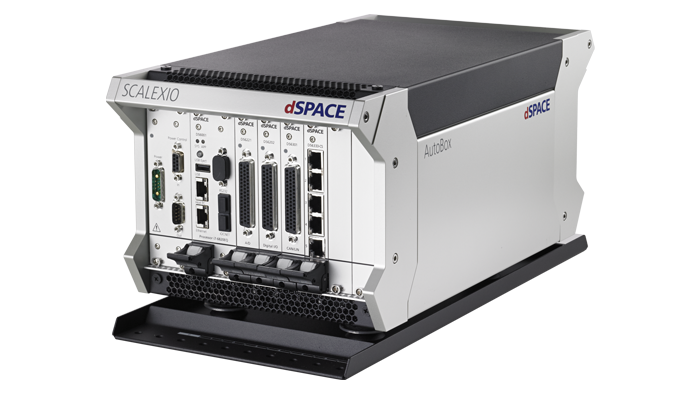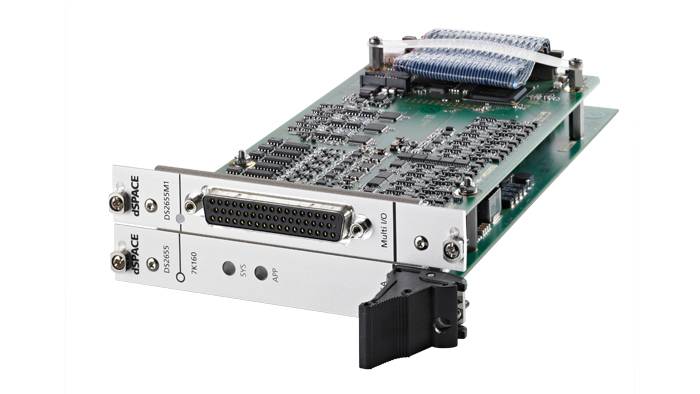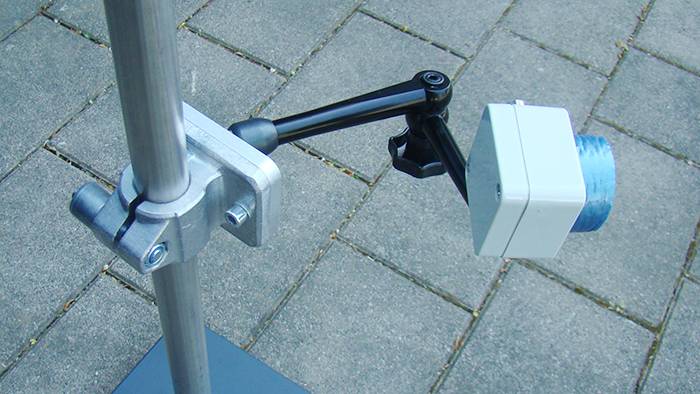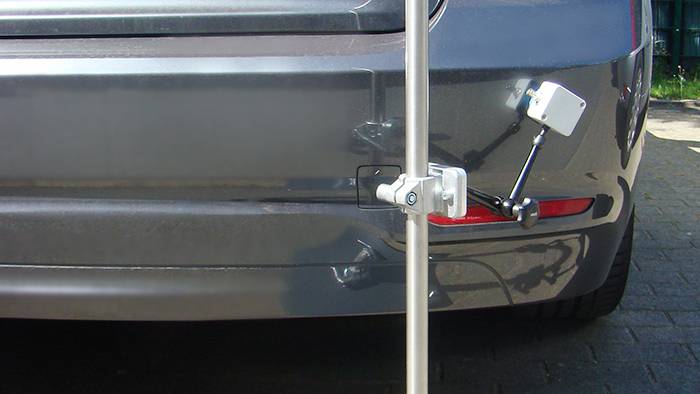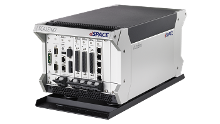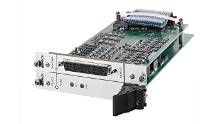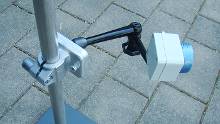Mobile Test System for Ultrasonic Sensor Technology in the Vehicle for Vehicle-in-the-Loop Applications
|
Publié : 08 mai 2020 |
Thomas Michalsky, Senior Manager Engineering Services, dSPACE GmbH
How great would it be to test object detection with ultrasonic parking sensors directly in the vehicle? In other words, a comprehensive functional test without removing the sensors and without making changes to the vehicle or the automotive bus systems concerned, and above all, without any movement, neither by the vehicle itself nor any object in front or behind the vehicle. At dSPACE, we can offer this kind of test system – the Mobile Ultrasonic Sensor Test System.
It makes no difference who manufactured the parking system or which bus system is used, be it CAN, LIN, FlexRay, Automotive Ethernet, or a proprietary protocol. What counts most is that there is no intervention in the vehicle at all and that the sensors are stimulated in such an elaborate way that makes it possible to specify precisely adjustable object distances, which the ultrasonic sensor recognizes as a valid object with the appropriate distance. All this with not one moving part.
By using the dSPACE test system, a number of test scenarios with ultrasonic sensors are conceivable:
- System integration testing
- Human-machine interface (HMI) function testing in the vehicle
- End-of-line testing
- Homologation (frontloading of ISO-17386 tests)
- Workshop tests:
- Accurate and reproducible tests after replacing one or more sensors
- Accurate and reproducible tests after replacing or painting the bumper
- Accurate and reproducible tests after any kind of modification or manipulation of the vehicle body
Objective
There are various situations in which the functionality of an ultrasonic displacement sensor must be checked. This can be a normal function test as part of a plant or vehicle revision, for example:
- Approving a vehicle in which the displacement sensor is installed,
- Performing an end-of-line test after completion
- Performing a functional test after replacing a displacement sensor or a component in which the displacement sensor is installed.
You can also apply a complex test scenario in which you test the functionality of the displacement sensor and the connected control unit using a simulated environment.
Components of the Mobile Ultrasonic Sensor Test System
The mobile test system consists of a dSPACE SCALEXIO real-time system, including a high-performance FPGA and a real-time processor. The ultrasonic signals emitted by the real parking sensors are processed by I/O modules that are connected to the FPGA and the relevant AD channels. The same applies to the generation of the ultrasonic echo signal, which is generated via DAC channels that are connected to the FPGA.
The trigger signal for calculating the echo signal on the dSPACE side is derived from the sensor installed in the vehicle and the emitted ultrasonic signal. A synchronization of the operating mode of the sensor is not required, independent of whether the sensor is in transmit or receive mode. Instead, the communication between the parking control unit and the sensor is decoded.
The dSPACE sensor and signal generator are connected to the real parking sensors over the air. The dSPACE sensor is placed in front of the vehicle with a dSPACE mounting bracket. A mechanical attachment to the vehicle is not necessary.
Depending on customer requirements, up to 12 parking sensors can be stimulated simultaneously. The dSPACE mount is designed to be flexible enough to cover the various sensor installation positions for a wide range of vehicle designs.
Overview of the Components
dSPACE provides single-sensor mounts or mounts for holding several dSPACE sensors.
Application of Ultrasonic Sensors in Vehicles
Nowadays, displacement measuring systems are used to visually or acoustically support the driver during the parking procedure. Modern systems go far beyond the visual and acoustic aspect and offer additional and active support for the driver to increase safety and comfort. The comprehensive and reliable monitoring of the vehicle's close range using ultrasonic sensor technology supports the following assistance systems, among others:
- Parking assistance system (PAS)
- Parking steering control (PSC)
- Parking space localization (PSL)
- Park emergency brake (PEB)
- Pull-out control (POC)
- Auto park assistant (APA)
- Remote park assistant (RPA)
Measurement Principle
The ultrasonic sensor installed in the vehicle generally operates on the principle of transit time measurement: It measures the time required for an ultrasonic transmission signal to travel from the displacement sensor to an object to be detected and return to the displacement sensor as a signal reflected from this object. If the propagation speed of the ultrasonic wave in free space is known, the distance between the displacement sensor and the object to be detected, which must be within the radiation range of the ultrasonic distance sensor, can be determined directly.
Application
In the vehicle, the simulated object distance, which is at the front right in the following example, is shown in the multifunctional display. In this case, the set object distance in ControlDesk is 37 cm.
Depending on your requirements, you can interactively and accurately specify the stimulation of the parking sensors with an object distance in the dSPACE experiment software ControlDesk or calculate it dynamically in the environment simulation with dSPACE ASM Traffic.
The Mobile Ultrasonic Sensor Test System automatically analyzes the signal generated by the in-vehicle ultrasonic sensor with regard to ultrasonic frequency and signal amplitude, among other things. According to the object distance to be simulated, the signal is accurately reproduced with regard to these properties and generated with a delay as an echo signal to stimulate the sensor installed in the vehicle.
The test system supports the calculation of direct and indirect echo signals. The only requirement for generating indirect echo signals is that a dSPACE sensor mount with a dSPACE sensor is placed in front of the sensors to be tested. Multiple echoes are also supported.
Application Example: Frontloading ISO 17386 MALSO Tests
ISO 17386:2010 describes performance requirements and test procedures in the context of MALSO systems (MALSO: Maneuvering Aids for Low Speed Operation).
It specifies the minimum requirements for the functionality that the driver can generally expect from object detection, i.e., detection of and information about the presence of relevant obstacles within a defined (short) detection range. It defines minimum requirements for error reporting and performance testing procedures. It also contains rules for the general information strategy but does not limit the type of information or display system.
Common ISO-compliant methods specify a test procedure in which a rod with a diameter of 7.5 cm is moved in a fixed grid within the specified detection range of the ultrasonic sensors. In other words: During the ISO-MALSO tests, a test object must be moved in front of and behind the vehicle.
The dSPACE Mobile Ultrasonic Sensor Test System lets you simulate this test on a real vehicle. The simulated ISO rod is moved around in the environment simulation according to ISO specifications and the calculated distances of the object to the vehicle are used as a simulated echo signal for stimulating the real sensors installed in the vehicle. The measurement of the real echo signals must be made available to the driver acoustically and, depending on the equipment, visually as plausible feedback about the vehicle distance to the object.
Summary of the Main Advantages of the Mobile Ultrasonic Sensor Test System
- Mobility: The test system is easy to transport and designed for use directly on the vehicle.
- No modifications: No vehicle modifications are necessary.
- Reproducibility of the tests: Tests of the ultrasonic sensor technology are easily reproducible and documented.
- Usability: To test the ultrasonic sensor technology, the user does not have to have detailed knowledge of the measuring system installed in the vehicle (black-box test).
-
- Afficher en ligne
- Téléchargement
- Testing of Ultrasonic Sensor Applications A new possibility to test UltrasonicSensors: Over-the-air stimulation of the real sensor in a test bench setup.
- Test and validation of ultrasonic parking systems Virtualize the test procedures based on simulation Over The Air, as frontloading the end-to-end testing and validation of the ultrasonic sensor system to the lab can help detecting implementation errors in an early stage of development.
Faire avancer l'innovation. Toujours à la pointe de l'évolution technologique.
S’abonner à nos newsletters, gérer ses abonnements ou se désabonner. La newsletter mensuelle contenant toutes les informations liées à l’aéronautique et défense.

